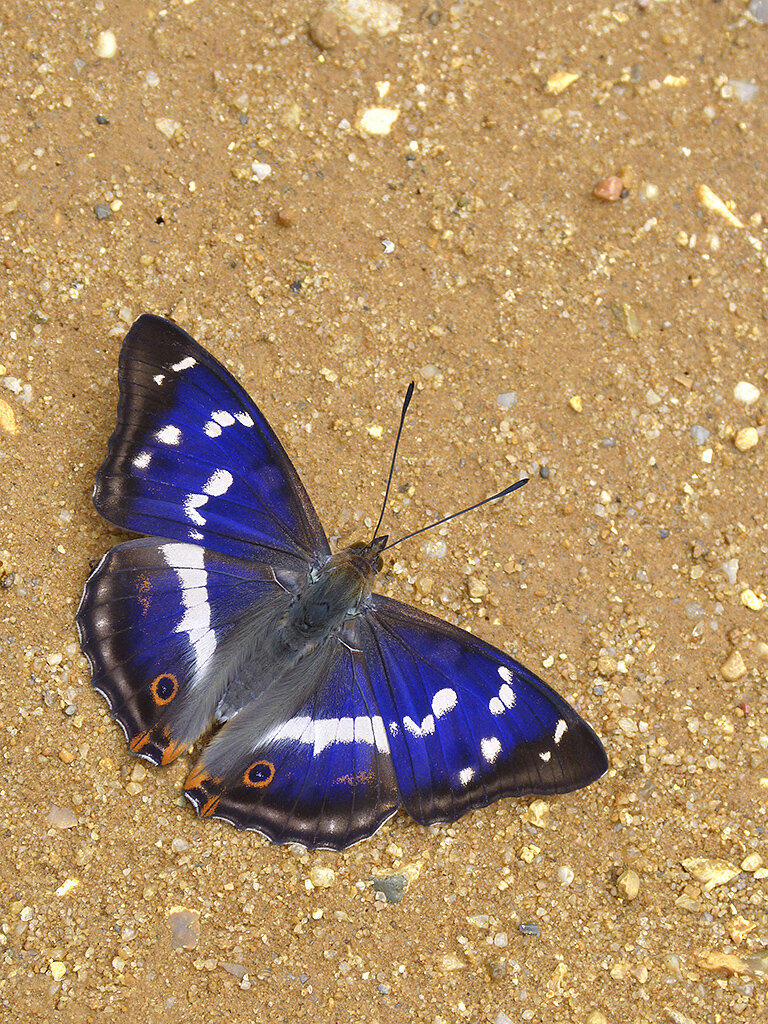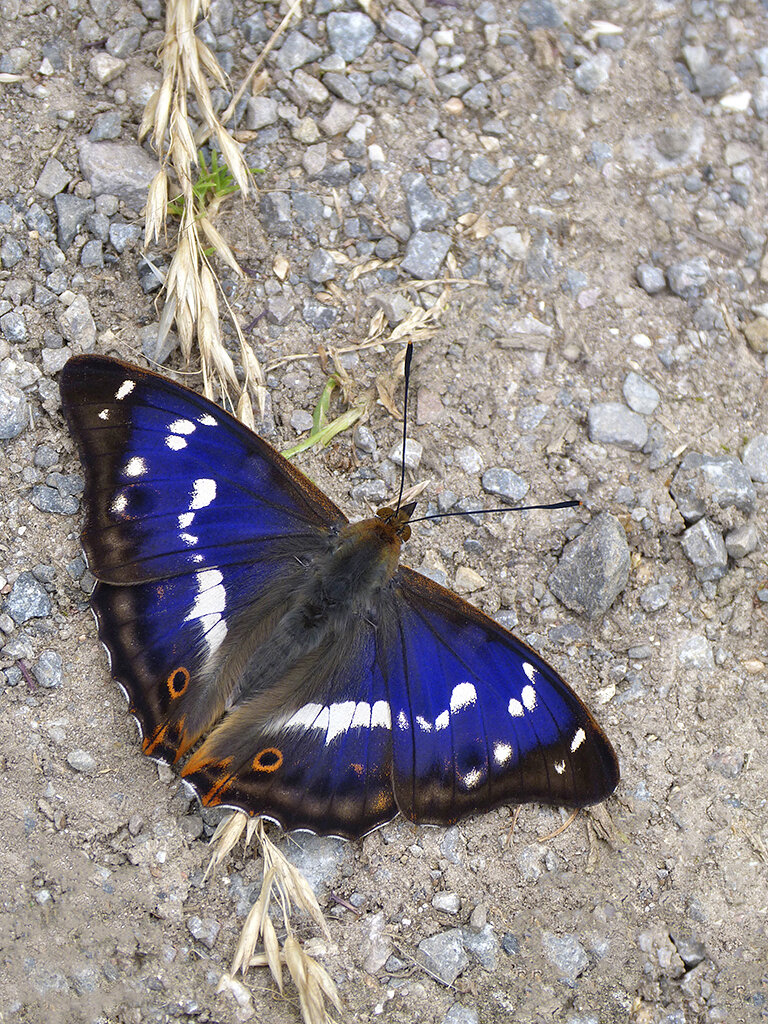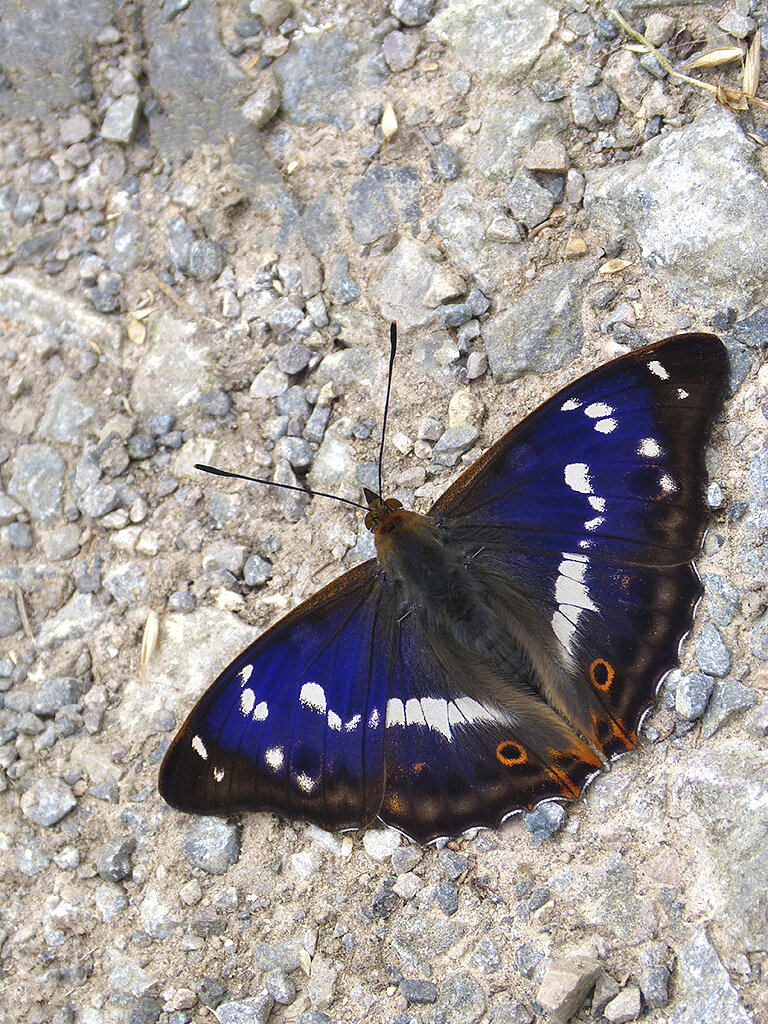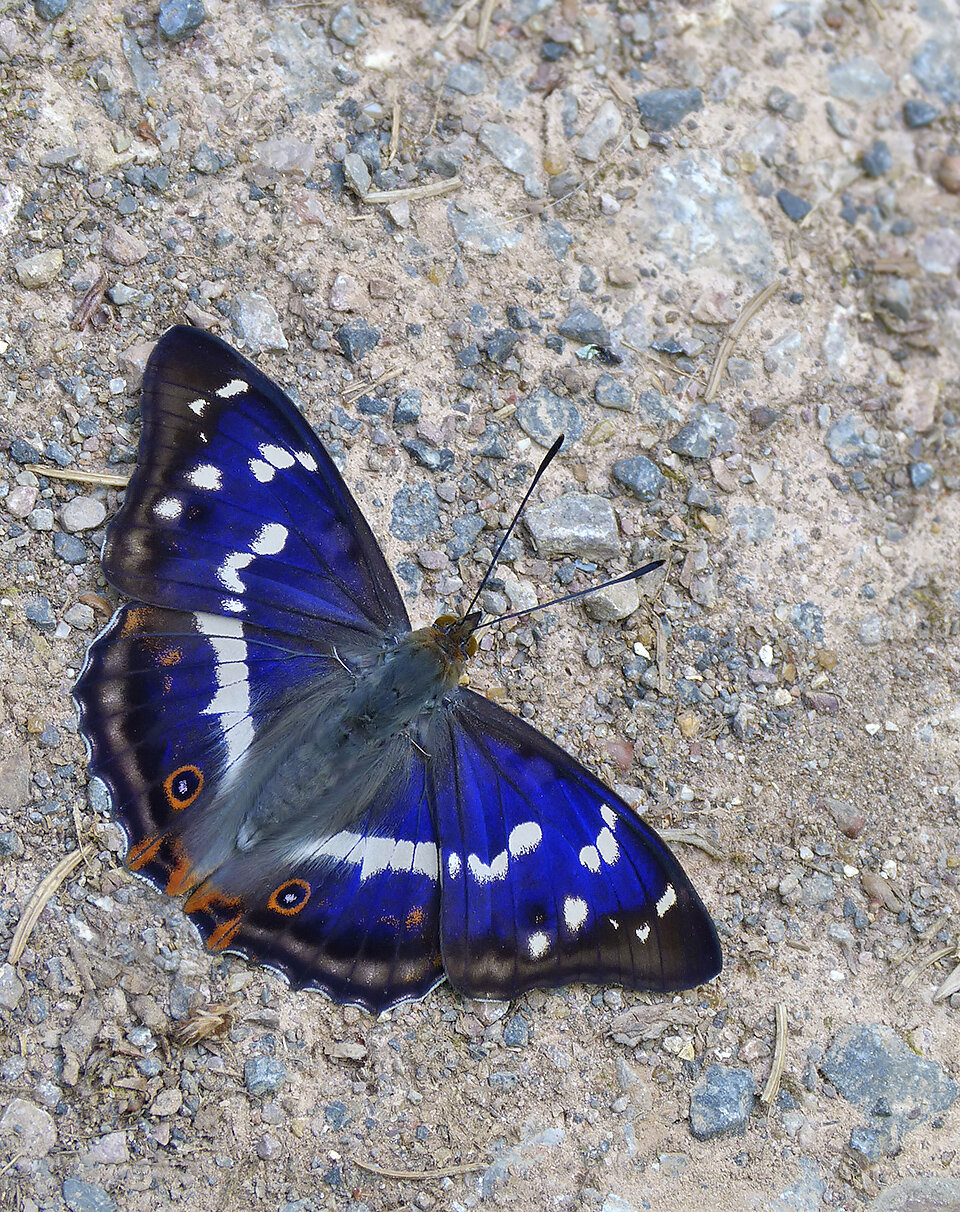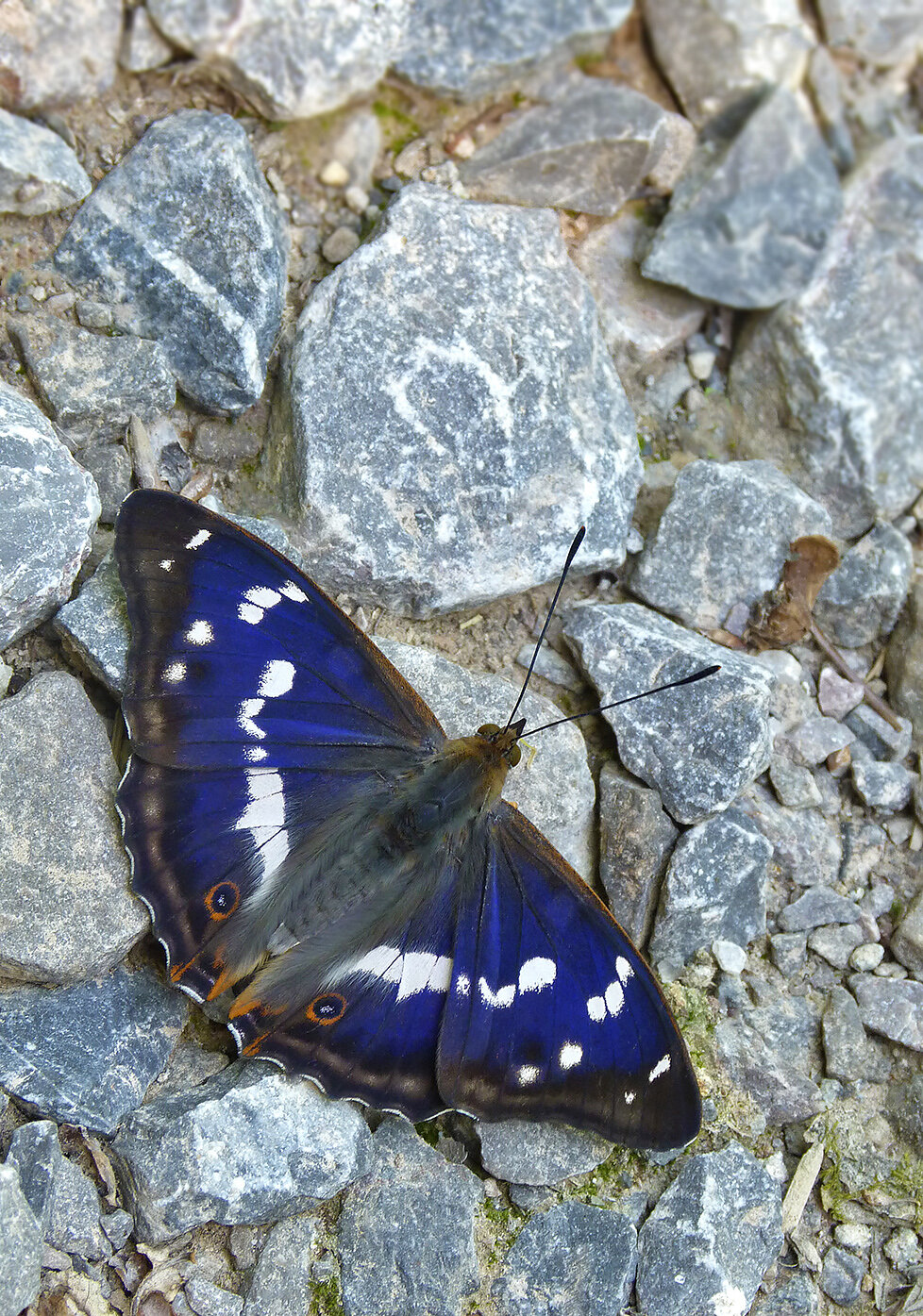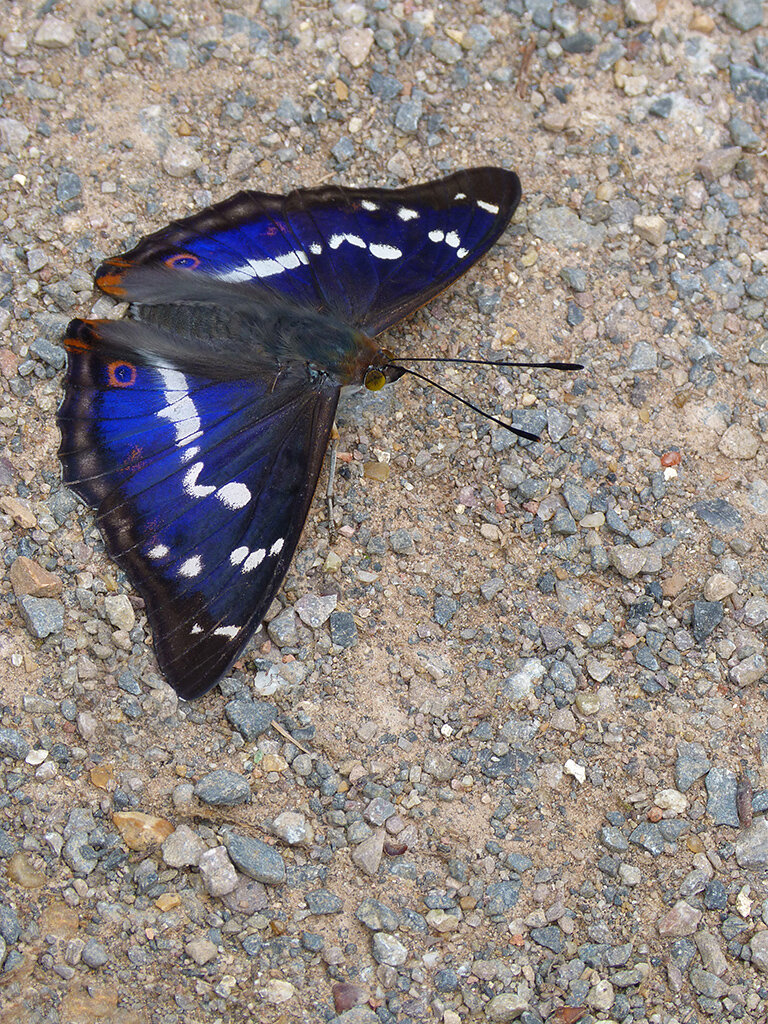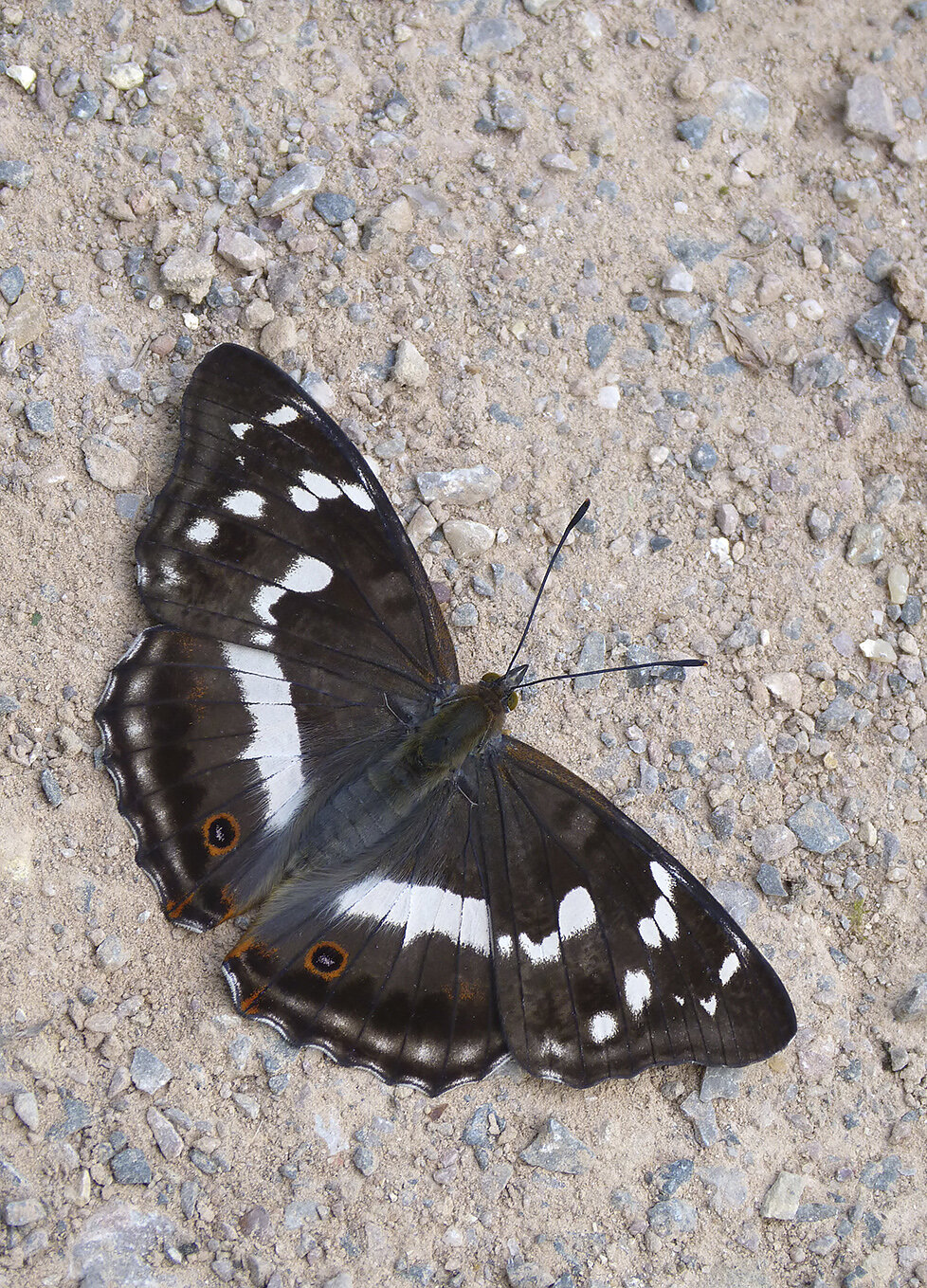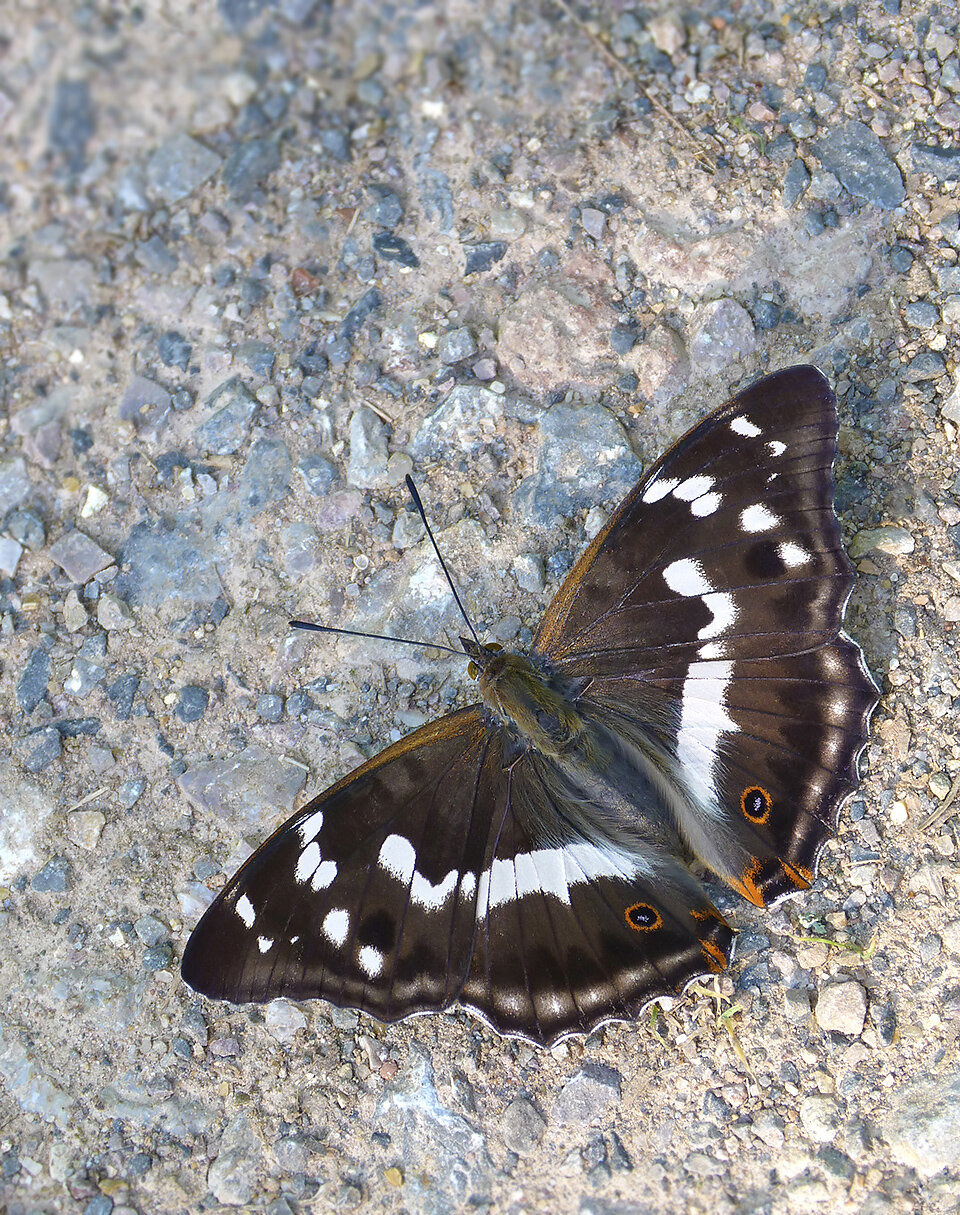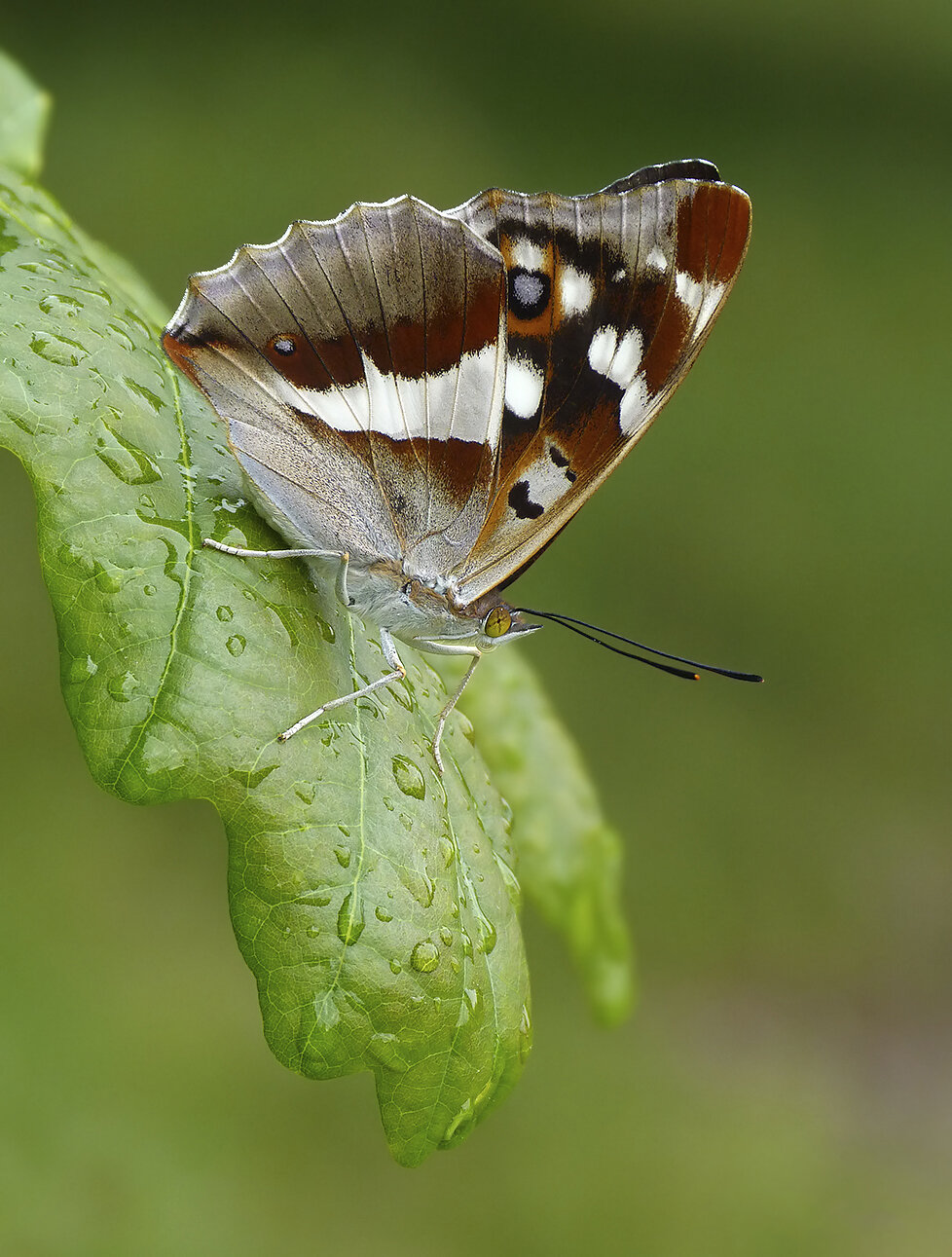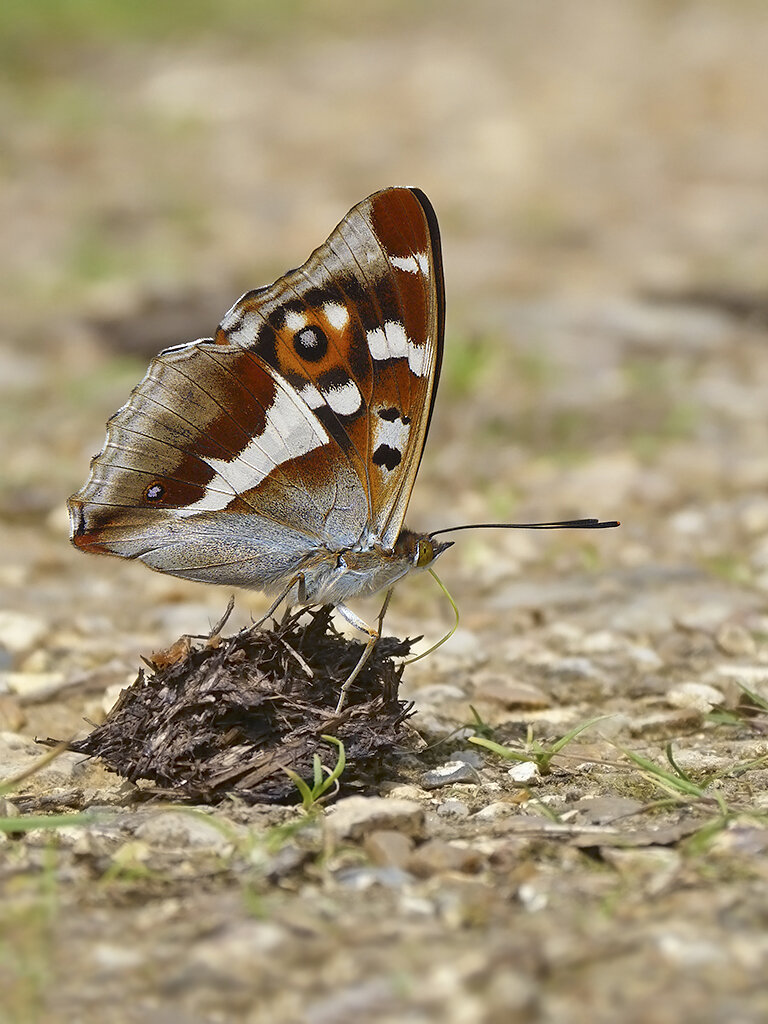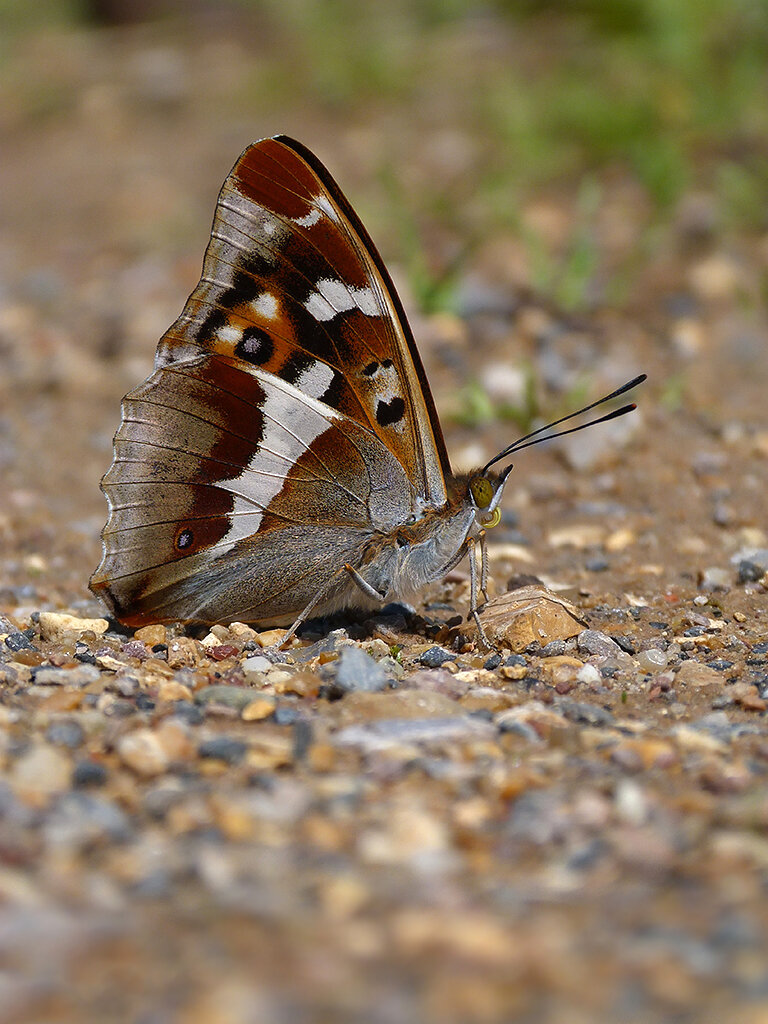Close Encounters of the Purple Kind …
The Purple Emperor, Apatura iris is a magnificent and sometimes elusive insect that is actively sought out by the many subjects of ‘His Imperial Majesty’, as the male butterfly is affectionately known. To say that some observers reach a state of obsession is an understatement with many followers making annual pilgrimages to see this species.
The male is undoubtedly one of the most stunning and sought after of all the British butterflies. From certain angles, even at close observation, it appears to have black wings intersected with white bands. However, when the wings are at a certain angle to the sun, the most beautiful purple-blue sheen is displayed, a result of light being refracted from the structures of the wing scales. The female, beautiful though she is, appears a deep brown with white bands and does not possess the purple-blue sheen.
Early morning and again during late afternoon on hot humid days, when the males come down to the ground to take in nutrients from damp earth and animal droppings, is generally the best time to see them. They are also partial to sweat - a key component of Emperor hunting - and readily land on observers. Despite this ‘grounding’ behaviour, both males and females spend the majority of their time high in their arboreal home.
The flight season is usually from late June to early August, with most adults emerging over a three-week period; the average flight season recorded between 2010 and 2014 in Sussex was 28th June to 9th August. However, during this five-year period, two late years (by modern standards) were recorded. The typical first appearance date during the 21st century is now a little earlier, usually falling between the 20th and 25th June. During the later decades of the last century iris usually emerged in early July, so the flight period has shifted forward significantly, by at least two weeks (Blencowe and Hulme, 2017). The first confirmed sighting of the 2020 season occurred in West Sussex at Knepp on Saturday, 13th June.
References:
Blencowe, M. and Hulme, N. (2017). The Butterflies of Sussex. Newbury, Berkshire: Pisces Publications on behalf of Butterfly Conservation (Sussex Branch), pp. 27, 170-179.
Oates, M. (2020). His Imperial Majesty - A Natural History of the Purple Emperor. London: Bloomsbury Wildlife.
www.apaturairis.blogspot.com [Accessed, 2nd June 2020].
www.ukbutterflies.co.uk/species.php?species=iris [Accessed, 2nd June 2020].

